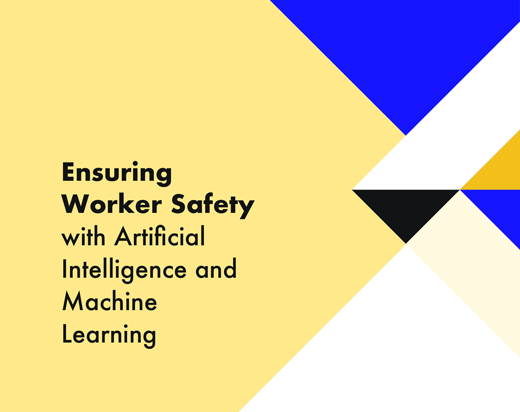Worker Safety in Construction
Lower risk of worker injuries through AI-driven computer vision and image analysis
Industry Challenges & Trends
Organizations in construction, manufacturing, food processing, oil and gas industries operate in environments with industrial machinery under volatile conditions, which exposes workers to risk. While reducing the number of accidents to zero is impossible, the consequences of non-rigidly enforced safety practices are costly, both to workers and businesses. The direct costs include compensation payouts, litigation, and rise in insurance premiums. The indirect damage can be more severe, including loss of productivity, missed business opportunity, and higher recruiting costs.
The monitoring of workers for wearing personal protective equipment (PPE) through computer vision and image analysis could either prevent or alleviate up to 40% of production accidents by identifying those who do not follow safety protocols in real time and alerting safety manager.
Monitoring Solution for Safety Compliance
The Provectus Worker Safety Monitoring Solution is a computer vision-driven image & video analysis platform designed to detect PPE non-compliance in real time. The system analyzes video footage of the factory floor, identifies workers, and checks if they comply with safety regulations. Safety managers are notified on site if any piece of equipment is missing to enforce safety compliance.
Real-world Case
The Client is a multinational engineering, procurement, construction and installation service provider for large-scale industrial projects. Responsible for thousands of construction workers operating in hazardous conditions, the company needed an automated system to monitor PPE and safety compliance to reduce the number of accidents and near-misses at their construction sites. The Provectus Worker Safety Monitoring Solution allowed enforcing safety practices through computer vision- and image analysis-driven monitoring, enabling 24/7 vigilance and instant alerts on detected cases of non-compliance to safety managers.
Key Features
- Pre-built machine learning architecture, including infrastructure for model design, training, and deployment in production
- Real-time image recognition and classification to identify unsafe worker behavior and PPE non-compliance
- Automated data aggregation of occurring safety alerts to help safety managers set safety education priorities to prevent accidents
- Ability to work with low-quality images and video data to create solutions based on existing video and IT-infrastructure
- Cloud vendor agnostic — The architecture is certified to be used with different cloud providers
How It Works
The cameras and high-speed internet service with a local carrier are set to work on site. Image recognition and classification systems assess video data from cameras, identify unsafe worker behavior in real-time, and send alerts to safety supervisors. The aggregated data is analyzed to identify and classify hazards and generate safety suggestions for future training and education. Email notifications frequency is customized based on user preferences. The data is securely stored and processed in the cloud and can be accessed using a mobile device or a PC.
Benefits
Increased Transparency & Accountability
Collected data can be reviewed to identify hazards, allowing for safety suggestions
Lower Risk of Injuries
Captures 100+ safety violations per months at a typical worksite to prevent injuries
Automated Worksite Observations
AI analyzes video footage in real time and alerts safety officer in case of safety violation
Reduced Manual Work
The solution reduces the need for manual inspections run by safety managers

Ensuring Worker Safety with Artificial Intelligence and Machine Learning
Despite clear safety regulations and procedures, worker safety remains a huge challenge for businesses that operate in hazardous environments such as construction, manufacturing, oil and gas, and engineering.
Find out how AI-driven solutions for worker safety can save lives, prevent worker injuries, and avoid costly litigation while ensuring PPE compliance.



